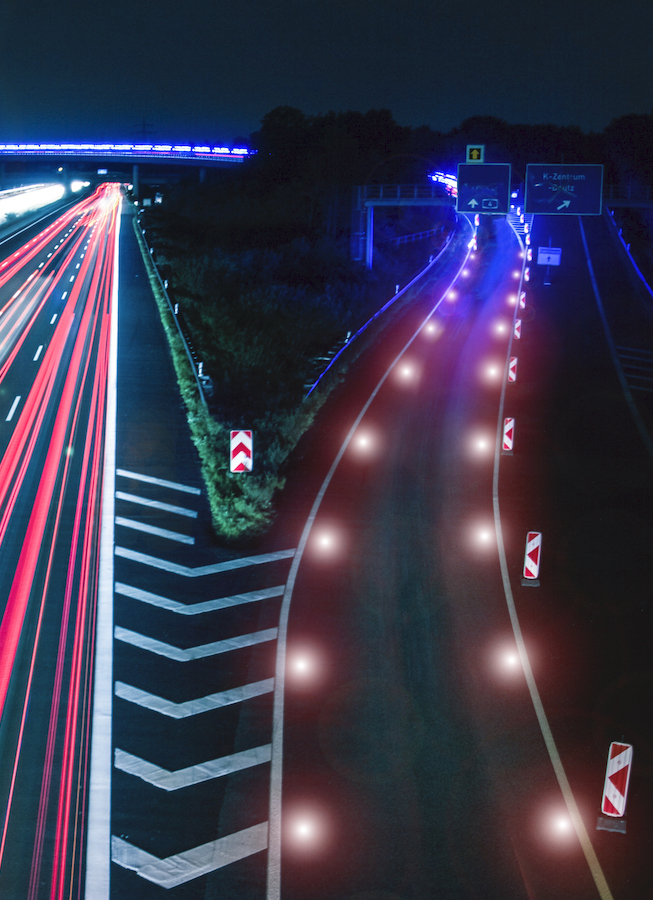Nudged by the light
MeBeSafe have developed a nudge that slows down speeding drivers by lights in the roadside. The nudge is successful from a technical point-of-view, and leads to 40% fewer speeding drivers. If a nudge is to be implemented, however, it’s desirable if people also understand and accept it. And they seemingly do.
From early ideas, rough modelling, simulator studies and up to a real-life road exit in Eindhoven, the Netherlands – the light nudge has had a long journey to reality. The principle is as simple as ingenious – speeding drivers are met by lights in the roadside moving towards them to create an illusion of speed, or simply by static guiding lights. And both are successes.
Results from the field test show that drivers slow down – and the faster they go, the more they slow down. What this means is that the measure works very well for its intended purpose, to only nudge drivers going above the appropriate speed. It also seems to work well for habitual speeders – going too fast without being aware of it. This is important, since their unawareness normally won’t allow them to react – making traditional speeding tickets futile in trying to change their subconscious habit.

Then again, when a nudging system is effective in reducing the amount of speeding drivers, it would be even more satisfactory if the affected drivers also accept it. It’s however not the simplest of feats to capture people’s reaction when they’re exiting a motorway in a car. The drivers are highly enclosed inside their car and it’s not a brilliant idea to walk out and talk to them on a busy road.
Early simulator studies with 90 drivers found that red was the colour most associated with slowing down, which led to using red lights. The drivers also understood that the lights could help them become more alert and adopt a safer speed. But this alone was not enough to determine the acceptance of roadside lights in the real world.
To capture the experience of people passing through the nudge in Eindhoven, MeBeSafe used the fact that it was installed at a road exit leading more or less only to a specific housing area. People living there were bound to have taken the exit, so they were contacted and invited to answer questions on how they perceived it. Naturally, this would not capture their first-time reactions, but the 346 respondents gave plenty of insight into how they perceived and would rate the nudge.
And the surveyed people were indeed using the exit. Only 7% took it less than once a week. They were really positive towards the nudge, regarded it as a safe and appropriate way to increase attention and reduce speed. A very interesting aspect was also brought up; that the lights would help guide drivers through the road curves when it is dark outside.
When asked which one of three alternatives they preferred – only a speed limit sign, complemented with the lights, or complemented with a speed camera, the sign along with the nudging lights were by far preferred the most, with almost 90% respondents selecting it as their first or second option.
It therefore seems like although moving lights could sound intrusive and distracting – they were in fact not perceived as such. And based on data analysis of almost 90 thousand drivers passing the nudge, the setup yields a 40% decrease in the amount of speeding drivers before the sharp curve of the exit. Together, these results could very well speed up adoption of soft measures in the hard traffic infrastructure.
